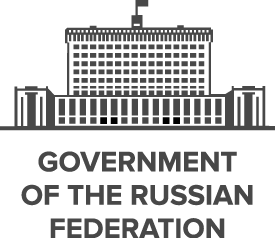Founded in the 12th century, the Principality of Muscovy was able to emerge from over 200 years of Mongol domination (13th-15th centuries) and to gradually conquer and absorb surrounding principalities. In the early 17th century, a new ROMANOV Dynasty continued this policy of expansion across Siberia to the Pacific. Under PETER I (ruled 1682-1725), hegemony was extended to the Baltic Sea and the country was renamed the Russian Empire. During the 19th century, more territorial acquisitions were made in Europe and Asia. Defeat in the Russo-Japanese War of 1904-05 contributed to the Revolution of 1905, which resulted in the formation of a parliament and other reforms. Repeated devastating defeats of the Russian army in World War I led to widespread rioting in the major cities of the Russian Empire and to the overthrow in 1917 of the imperial household. The communists under Vladimir LENIN seized power soon after and formed the USSR. The brutal rule of Iosif STALIN (1928-53) strengthened communist rule and Russian dominance of the Soviet Union at a cost of tens of millions of lives. After defeating Germany in World War II as part of an alliance with the US (1939-1945), the USSR expanded its territory and influence in Eastern Europe and emerged as a global power. The USSR was the principal adversary of the US during the Cold War (1947-1991). The Soviet economy and society stagnated in the decades following Stalin’s rule, until General Secretary Mikhail GORBACHEV (1985-91) introduced glasnost (openness) and perestroika (restructuring) in an attempt to modernize communism, but his initiatives inadvertently released forces that by December 1991 splintered the USSR into Russia and 14 other independent republics.
Following economic and political turmoil during President Boris YELTSIN's term (1991-99), Russia shifted toward a centralized authoritarian state under the leadership of President Vladimir PUTIN (2000-2008, 2012-present) in which the regime seeks to legitimize its rule through managed elections, populist appeals, a foreign policy focused on enhancing the country's geopolitical influence, and commodity-based economic growth. Russia faces a largely subdued rebel movement in Chechnya and some other surrounding regions, although violence still occurs throughout the North Caucasus.
Russia is a semi-presidential federation.
Members:
Resources
Displaying 781 - 785 of 1046Regional Law No. 172-ZKO “On turnover of agricultural land”.
This Regional Law regulates relations dealing with ownership, management, tenure and disposal of agricultural land and shares in common property of agricultural land. It shall not be applicable to agricultural land allotted for subsistence farming, gardening, horticulture and stockbreeding. Minimum land area of consolidated agricultural land plots pertaining to public, municipal and common land ownership shall be 0,5 ha.
Regional Law No. 150-4-ZKO “On territorial land-use planning documentation”.
This Regional Law establishes composition and the modalities of elaboration of territorial land-use planning of municipal units, including territorial planning of municipal districts, general urban land-use plans and general plans of urban districts. Territorial land-use planning documentation must contain zoning of urban areas. The period of validity of land-use planning documentation shall be two years and shall be subject to regular renewal for each subsequent two-year period.
Regional Law No. 68-ZKO “On delimitation of plenary powers between state regional bodies in the sphere of land relations”.
This Regional Law delimits plenary powers between state regional bodies in the sphere of land relations.
Regional Law No. 140-4-ZKO “On territorial land-use planning”.
This Regional Law establishes the modalities for elaboration of land-use planning project containing land-use planning scheme, mapping of boundaries of land areas, land use restrictions, and the list of land-use planning arrangements.
Regional Law No. 210-ZKO “On protected areas”.
This Regional Law regulates relations in the sphere of institution (organization), conservation and protection of protected areas. Regional protected areas shall be classified as follows: (a) natural parks; (b) state nature reserves; (c) nature monuments; (d) dendrological parks and botanical gardens; (e) healthcare areas and spas; and (f) other categories established by the Regional Administration. Land of protected areas shall be classified as public or municipal land and cannot be allotted in ownership to natural and legal persons except for cases envisaged by the federal legislation.


